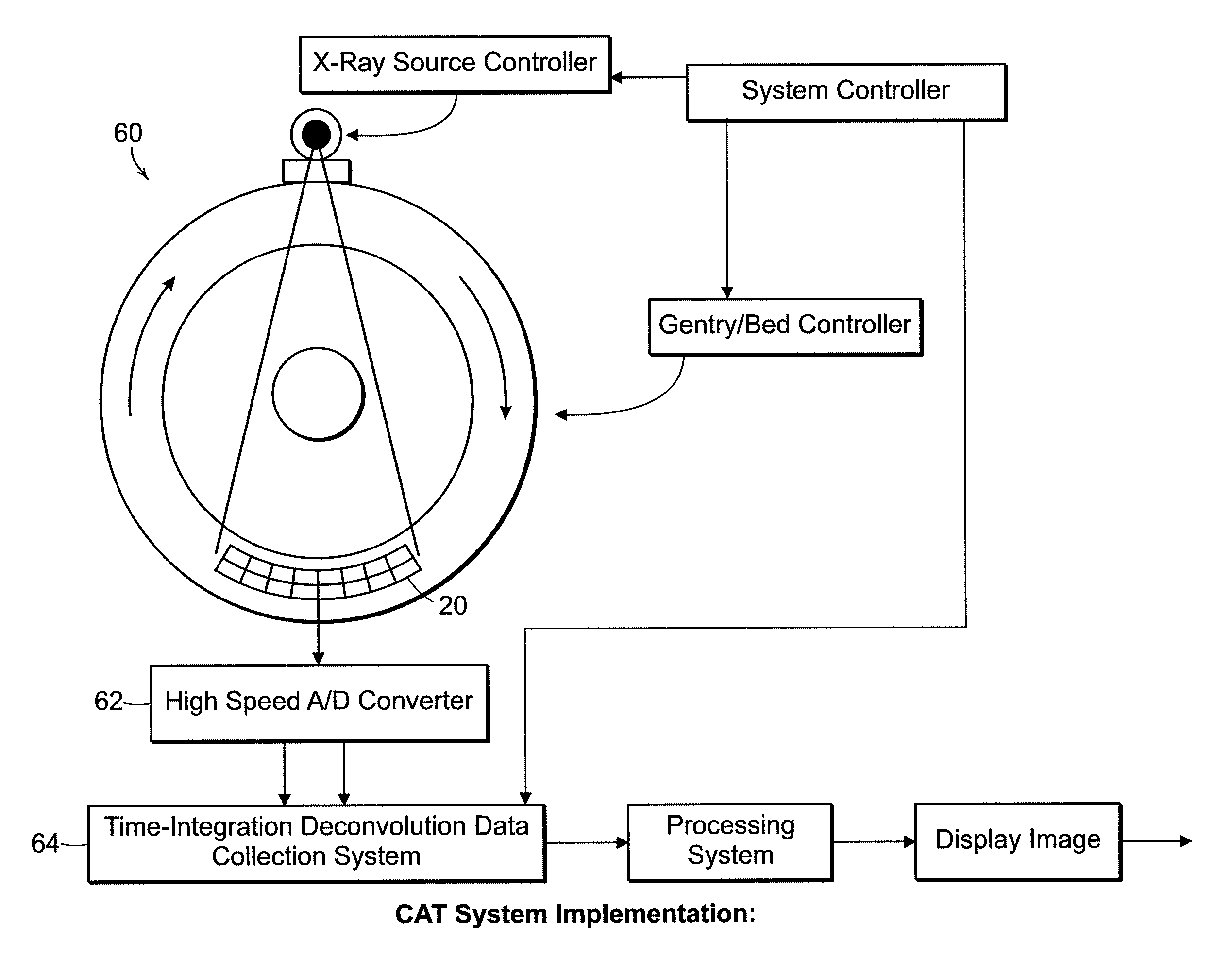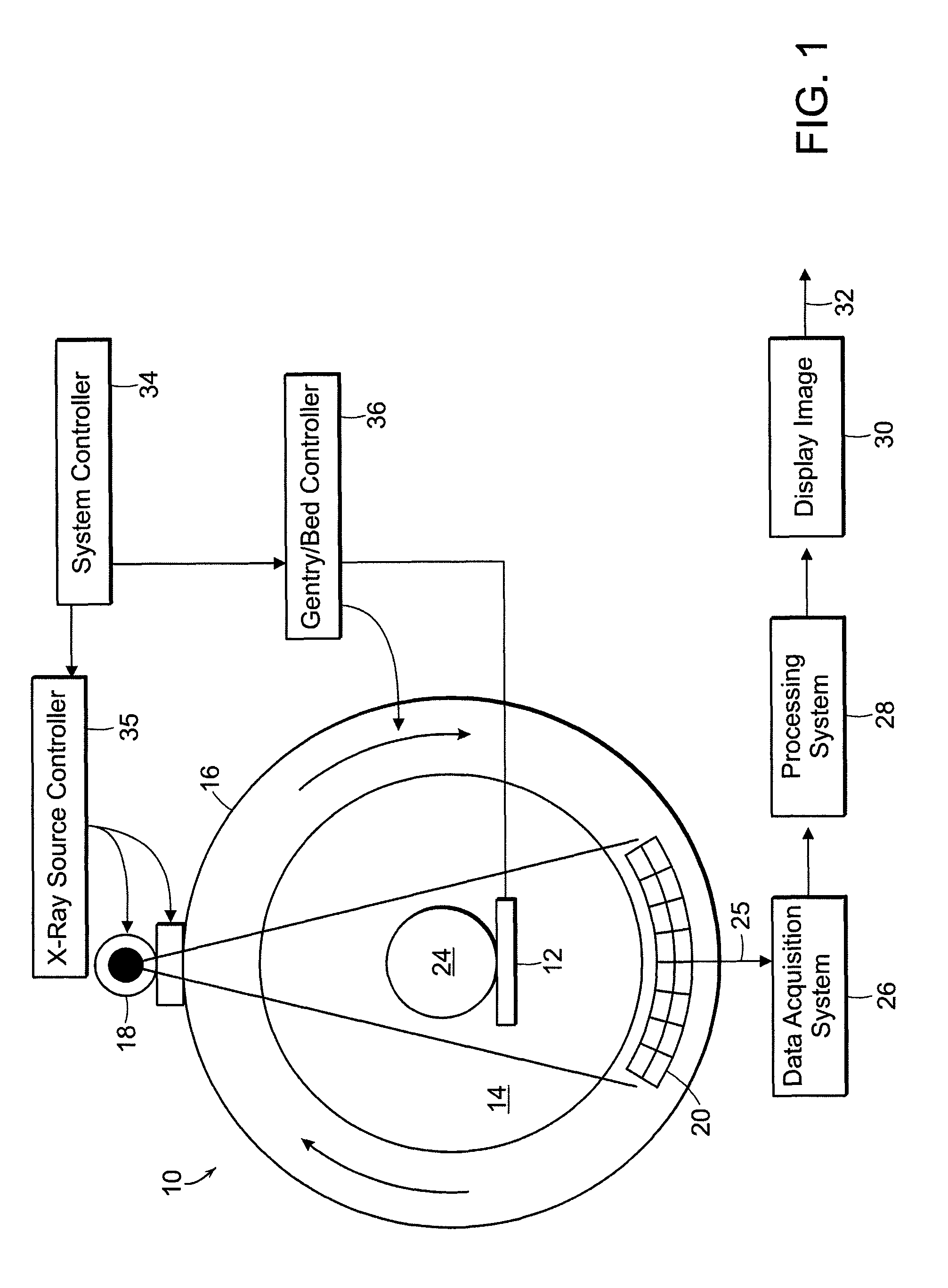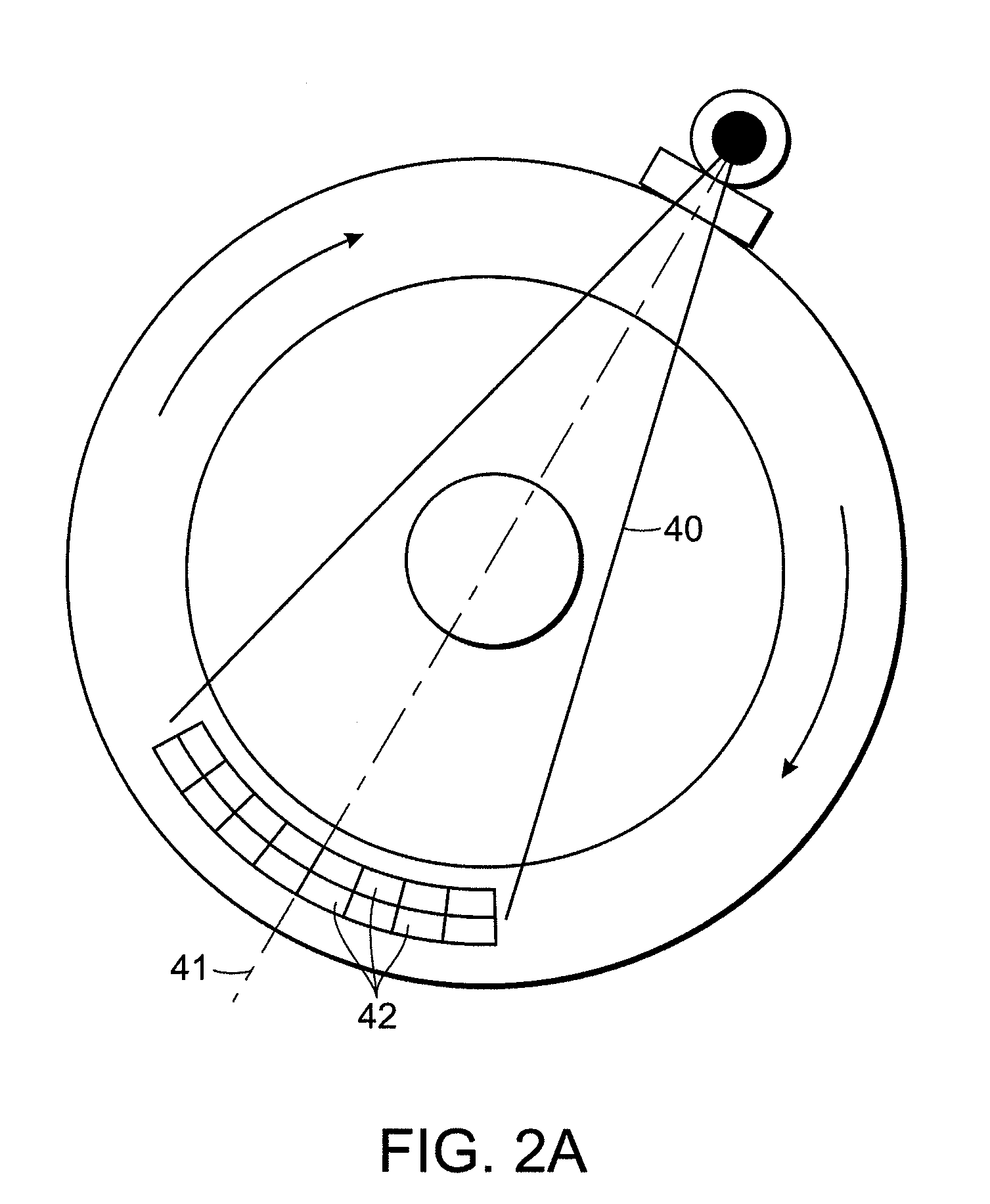Digital integration with detector correction
a digital integration and detector technology, applied in tomography, instruments, applications, etc., can solve the problems of blurring in an axial direction, blurring of acquired images, etc., and achieve the effect of reducing motion artifacts and eliminating image blurring
- Summary
- Abstract
- Description
- Claims
- Application Information
AI Technical Summary
Benefits of technology
Problems solved by technology
Method used
Image
Examples
Embodiment Construction
[0014]As can be seen in FIG. 1, a CT scanner 10 includes of an object table or support 12 which is positioned within the center opening aperture 14 of a frame 16 or gantry. A x-ray source 18 is mounted within the gantry 16 to one side of the opening aperture 14, and a detector array 10 is mounted to the second side of the aperture 14. During scanning, the x-ray source and the detector array are rotated around the object 24. CT relies on the measurement of attenuated x-ray transmission flux through the object from different rotation angles to form an image. The X-ray flux after attenuation by an object impinging on the x-ray detector and the attenuated x-ray flux is measured and recorded using a data acquisition system 26, data processing system 28 and display 30. The images can then be transmitted 32 via wired or wireless connection to data storage or a network. A system controller 34 is connected to the x-ray source controller 35 and the gantry and support controller 36. The data a...
PUM
 Login to View More
Login to View More Abstract
Description
Claims
Application Information
 Login to View More
Login to View More - R&D
- Intellectual Property
- Life Sciences
- Materials
- Tech Scout
- Unparalleled Data Quality
- Higher Quality Content
- 60% Fewer Hallucinations
Browse by: Latest US Patents, China's latest patents, Technical Efficacy Thesaurus, Application Domain, Technology Topic, Popular Technical Reports.
© 2025 PatSnap. All rights reserved.Legal|Privacy policy|Modern Slavery Act Transparency Statement|Sitemap|About US| Contact US: help@patsnap.com



